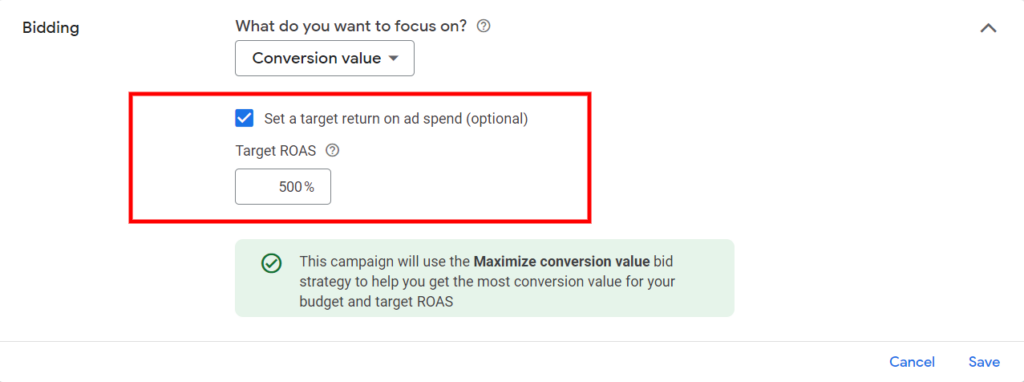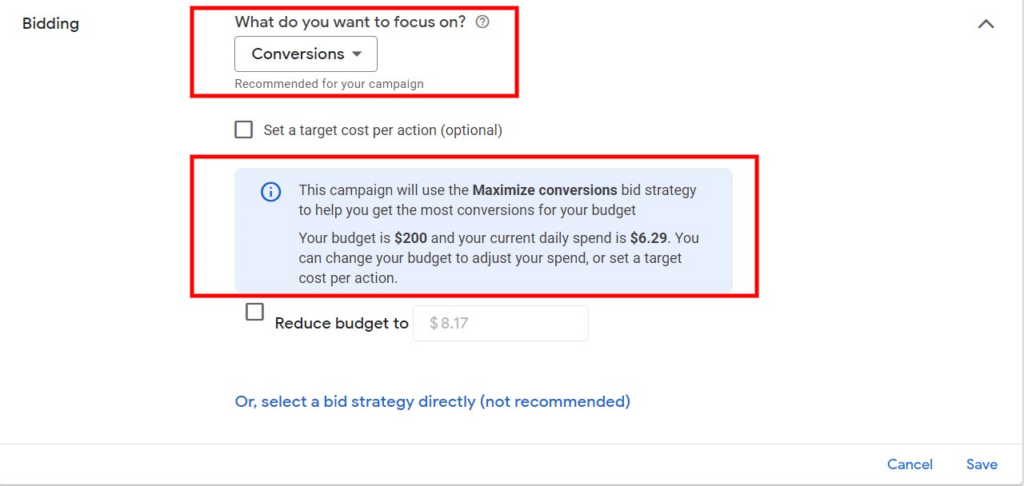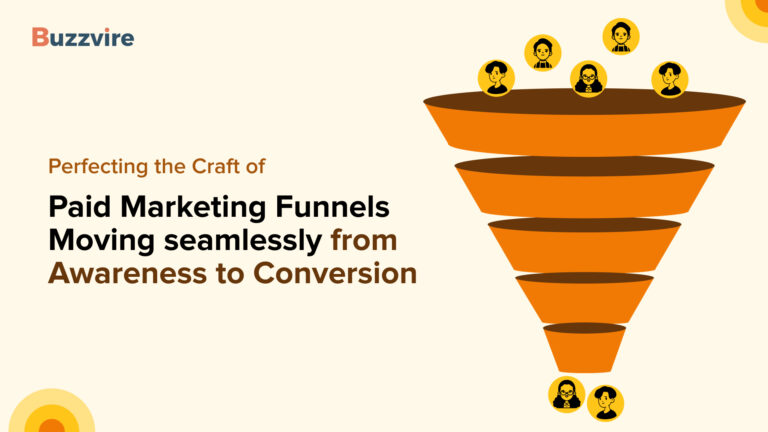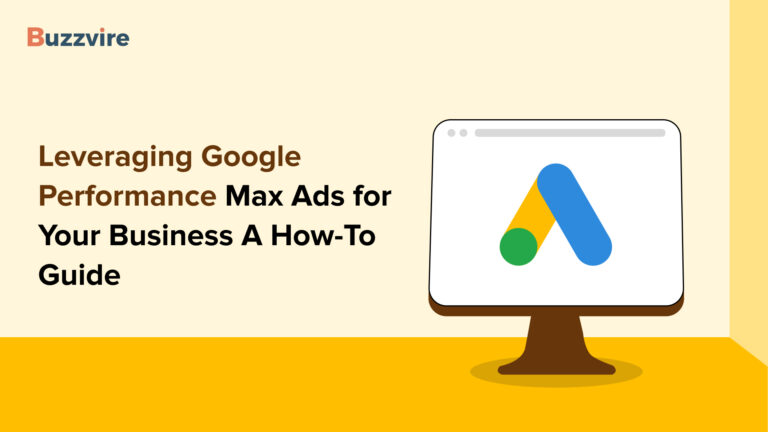
So you’re ready to advertise your product to the world and have a Google ad account set up. What next? Fire some ads on auto-mode and sit back to enjoy the traffic, clicks, impressions, conversions, or views flowing in. Wish it was that simple!
Google auctions an ad space on blogs or news websites and shows the ad based on advertiser’s ad quality and relevance. The idea is to give maximum visibility to relevant ads based on the advertiser’s budget.
Google ads work on an auction system that displays the ad of the highest ad bidder with the best ad score. The algorithm decides the best ad using the quality score, ad relevance, landing page, target audience, and competition parameters.
You should have a goal in mind before you set up your ad. It can be clicks, impressions, conversions, or views for video ads. Say you’re a new fashion retailer. You’d want to know about your brand and get more visibility, or if you’re running a limited-period sale of 20% off, you’d wish to have more conversions.
Based on your ad goals, you can plan Google ads bidding strategies to get the maximum out of your ad efforts. Broadly, your strategy can be manual or automated.
In manual bidding, you determine the maximum amount you’ll pay when someone clicks on your keyword or ad. Although you will have more control over your budget, you will lose in dynamically adjusting your value based bid on more attractive keywords or ads. Another disadvantage of manual ads is that it is prone to human judgment errors.
Automatic bidding is comparatively less time-consuming and allows you to reach closer to your intended results. You can display your ads to the intended audience and get the desired actions by choosing one or more Google Ads bid strategies.
Another subset of automated bidding is Google smart bidding, which uses machine learning to optimize ads for conversions or the conversion value in every auction.
Read:- Pros and Cons of Different Paid Advertising Platforms
In total, there are 11 different types of Google Ads bidding strategies available:
Target CPA (cost per acquisition)

It’s one of the preferred Google bidding strategies for paying for ads that get you the real deal or when you get an actual acquisition of a lead or an action. This could be a sign-up, click, or downloading a resource. The Target CPA is best for companies looking for targets and leads.
When should you use the Target CPA strategy?
- Using your conversion tracking data, this bidding strategy allows you to sidestep unprofitable clicks and get more conversions at a lower rate.
- This strategy is for you if you want to automate your bids to maximize your target CPA goal.
- Choose this strategy if your company aims to increase conversions from app downloads, signups, sales, and similar actions. Target CPA is one of the most budget-maximizing bid strategies.
Target ROAS

Return on ad spend or ROAS is a bidding strategy that targets “X” times returns on your spending. Say you want five times the return on your ad spend, so your ROI is 5, or on every $1 spent, you want five times the returns. This equates to a 500% target ROAS. So, Google would place your ads in front of an audience that is closer to making a buying decision. Based on the conversion values set at the conversion tracking stage, Google sets the bids to take you closest to your target ROAS.
When should you use the Target ROAS strategy?
- This target ROAS bidding strategy is directed toward eCommerce business owners.
- It allows businesses to set an amount to reach a specific return on their ad spend.
Note: Google discontinued Target CPA and ROAS as individual bidding strategies. But you can still include them in maximizing conversion value, conversions, and bidding strategies.
Maximize clicks

This strategy is among the most straightforward: get clicks for the set budget. Google aims to place your ads to get the most clicks per the competition. Works best to bring your website and landing page more traffic.
When should you use the maximize clicks strategy?
- Companies with a good conversion performance in previous campaigns will find this ad’s bidding strategy useful as it helps lower your bid amount per click.
- Since the learning period for this strategy is short, it’s ideal for tapping into new audiences or getting more data.
Maximize conversions

Google gives companies various options to utilize their budgets based on their advertising goals. You can let Google automatically set your bid to bring you the highest conversions, taking you to the desired goal. You must know that Google will use up all or most of your budget in a day to get you the clicks most likely to lead to conversions.
When should you use the maximize conversions strategy?
- If you’re fine with going aggressively toward conversions and exhausting your campaign budget limit, this bidding strategy is meant for you.
- Keep in mind your conversions may come at a high cost per action.
Maximize conversion value

Here, you set the worth of each conversion, or you tell Google, “Get me conversions that are worth X amount.” The difference between this strategy and the conversions is you optimize for maximizing the per-conversion value rather than the number of conversions.
When should you use the Maximize conversion value strategy?
- Go for this value based bidding Google Ads when you want to spend on ads that can bring you purchases of higher-value items.
- Google will look for potential customers that will get you the highest revenue from your ads.
Target impression share

In this strategy, you allow the algorithm to set bids automatically to achieve your target impression share goal. Choose from three places to display your ads: on the absolute top of the page, on the top of the page and anywhere on the page of Google search results. You can set the maximum CPC for your bid to avoid overspending your ad budget with getting the right results.
When should you use the Target impression share strategy?
- Although expensive, impressions can bring a great deal of brand recognition for your targeted keywords.
Manual cost-per-click (CPC)

To keep close control, opt for the manual cost per click. Once you set the bid values at the keyword level or ad group, you can ensure you’re within your budget limits.
When should you use the Manual cost-per-click strategy?
- It is meant to be one of the most cost-effective ad-bidding strategies
- The maximum that you pay is the max cost per click bid
Enhanced cost-per-click (ECPC)

As the name suggests, the strategy takes the Manual cost-per-click strategy a level higher by letting the Google algorithm dynamically change the bid.
When should you use the Enhanced cost-per-click strategy?
- If you’d like to boost your conversion rate and click-through rate at possibly a higher cost per click
- Choose this when you have a smaller budget
Viewable CPM (cost per 1,000 impressions)

This bidding strategy is only used for Display Network, where you are charged your specified target CPM or cost per 1,000 impressions.
When should you use the Viewable CRM strategy?
- Choose this strategy to boost brand awareness.
Maximum CPV (cost-per-view)

Use this strategy to build awareness with your YouTube video campaigns, mainly because this strategy allows you to reach a broader audience with few conversions.
When should you use the Maximum CPV strategy?
- Go for this if you’re on a low budget and want to pay only if the user views the video and does not skip it.
Target CPM (cost per 1,000 impressions)

You can apply this strategy to both YouTube and display campaigns and pay an average bid for every 1,000 times your audience views your ad. Even if users skip the ad, it counts as a view.
When should you use the Target CPM strategy?
- Take the help of this ad bidding strategy if you want to help your ad reach unique viewers.
Best practices for Choosing a Bidding Strategy

It’s easy to get lost along the way of bringing in the traffic and revenue you intend to. A better way to make Google Ads work best for you is by monitoring and adjusting your bidding strategy as things evolve. Here are a few tips to keep you on course and get the most out of your ads:
Start with your goals: All actions starting from your goals will ultimately lead you to achieve them.
Match your search intent with the ad: Keep your end users in mind when writing your ad copies and align the bid accordingly. Ad copies that target the right demographics incorporate the relevant interest points of your audience to help you reach the needed target groups.
Refresh your messaging periodically: Even with a successful ad campaign, you want to bring in a new perspective in your ads to keep attracting new prospects. It helps to have more than one set of copy so Google can optimize your campaign delivery.
Complete the bidding strategy thoroughly: Your campaign needs to run to the ground or somewhere close to your goals, or else you must let the campaign run entirely to achieve optimal results. Changing strategies too soon or often will impact your algorithm’s learning and won’t fulfill your ad goals.
Takeaways
There is a Google ads bidding strategy for every business, and each one comes with its pros and cons. Choosing one that aligns with your company’s advertising and marketing goals can be too much. That’s why the top Google Ads experts are available to help you get the most out of your ad spending and overall budget. A Google Ads agency can bring you closer to your intended business goals by sharing your budget and timelines.








